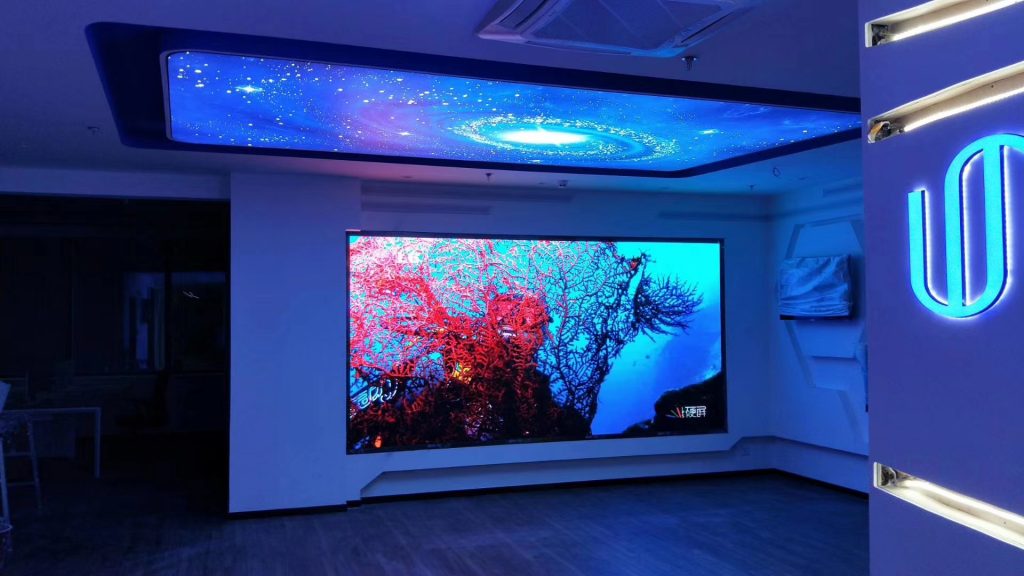
Indoor LED Display Screen: Illuminate the New Charm of Space
In today’s digital age, the demand for information display and visual experience in indoor spaces is increasing day by day. Indoor LED display screens, with their excellent performance and unique advantages, have become an indispensable visual tool in indoor environments such as commercial places, public spaces, and entertainment venues.
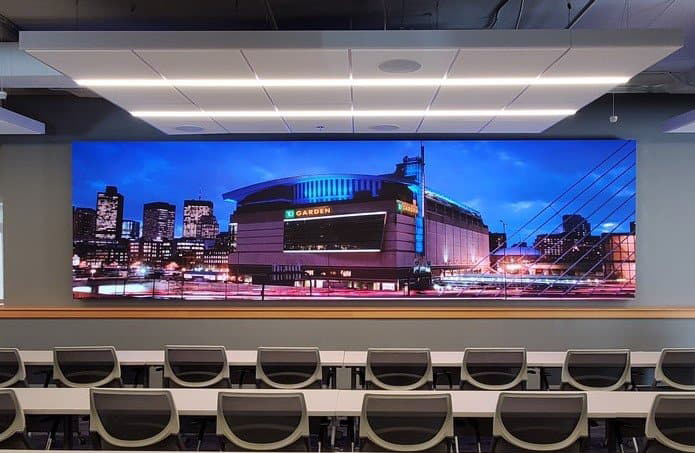
1、 High image quality, presenting the ultimate visual feast
Indoor LED display screens have extremely high resolution and clarity, capable of accurately reproducing every detail, whether it is delicate images, vivid videos, or dynamic advertising images, they can be presented to the audience with realistic effects. Its excellent color expression can cover a wide range of color gamut, presenting bright, saturated, and uniform colors, making the picture more vivid and lively, bringing the audience an immersive visual experience.
In commercial displays, high-quality LED displays can better showcase the details and features of products, attract customers’ attention, improve product attractiveness and sales conversion rates. For example, in a jewelry store, LED displays can clearly showcase the dazzling light and exquisite craftsmanship of jewelry, allowing customers to more intuitively feel the charm of jewelry; In clothing stores, dynamic fashion show videos are played through LED displays, creating a trendy atmosphere and enhancing brand image.
2、 Strong flexibility, adaptable to diverse spatial needs
Indoor LED display screens have high flexibility and can be customized according to different indoor spaces and usage needs. It can be installed on walls, hung on ceilings, and even formed into various irregular shapes such as arcs, circles, etc., to meet the requirements of different creative designs.
In addition, the size of LED displays can also be adjusted according to actual situations, from small displays of a few square meters to large displays of tens or even hundreds of square meters, all of which can be easily achieved. This flexibility enables LED displays to adapt to various indoor spaces, whether it is small conference rooms, exhibition halls, or large sports arenas and shopping centers, they can find suitable application scenarios.
In exhibition displays, LED displays can be customized into unique shapes and sizes according to the layout and design requirements of the booth, perfectly integrating with the exhibits and creating a unique display atmosphere. In stage performances, LED displays can be used as backgrounds to switch and change in real-time according to the program content and atmosphere, enhancing the visual effect of the performance.
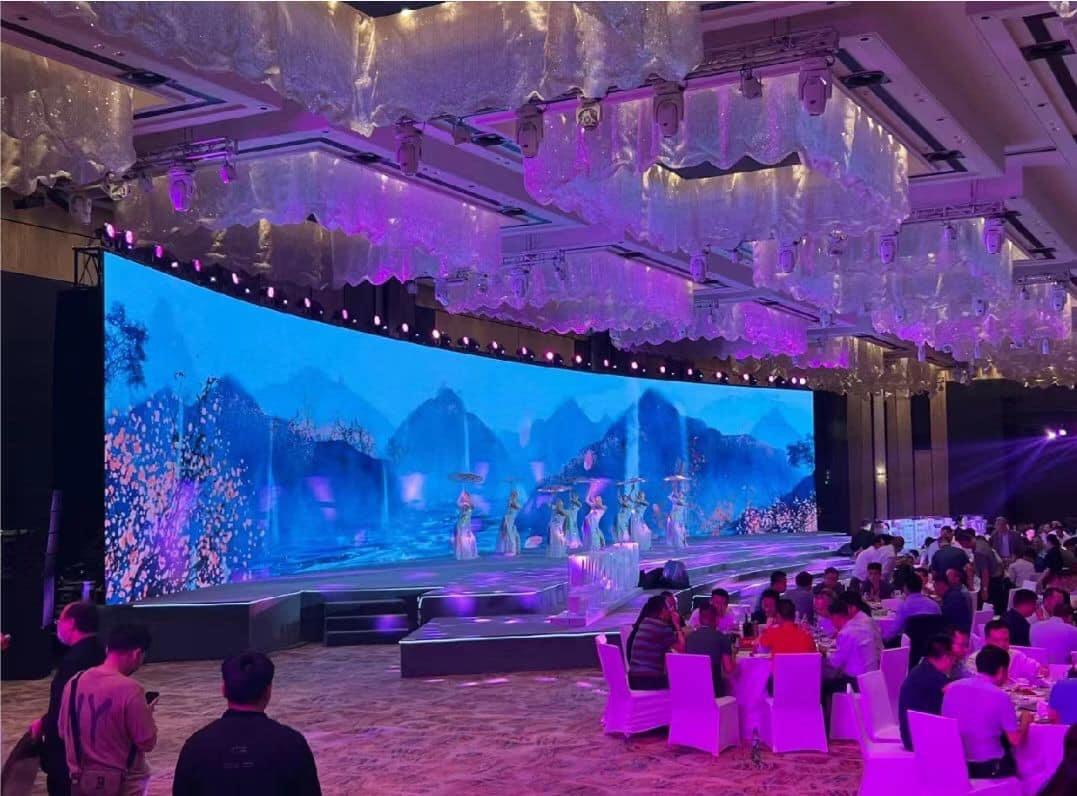
3、 Energy conservation and environmental protection, green and sustainable development
In the current era of advocating green environmental protection, indoor LED displays stand out with their significant energy-saving and environmental protection characteristics. Compared to traditional display devices, LED displays use light-emitting diodes as light emitting elements, which have higher photoelectric conversion efficiency. This means that LED displays can produce brighter light while consuming the same amount of electricity, greatly reducing energy consumption.
For example, in long-term commercial places such as shopping malls, supermarkets, etc., the extensive use of LED displays can significantly reduce electricity costs. At the same time, the LED display screen adopts advanced heat dissipation technology and intelligent control system in its design, which can automatically adjust the brightness according to the ambient light and display content, further reducing energy consumption. Moreover, LED displays do not contain harmful substances such as mercury, and have minimal environmental pollution during production, use, and recycling, which is in line with the concept of green and sustainable development.
4、 Good stability, ensuring long-term reliable operation
Indoor LED display screens have excellent stability and reliability. It adopts high-quality LED beads and advanced manufacturing technology, with a long service life, generally up to 50000 to 100000 hours. Under normal use, it can work continuously and stably, reducing the cost and trouble of frequent equipment replacement.
At the same time, LED display screens also have comprehensive protection and fault diagnosis systems. It can effectively resist the influence of indoor environmental factors such as dust and moisture, ensuring normal operation under complex indoor conditions. Once a malfunction occurs, the system can quickly and accurately locate the problem and issue an alarm in a timely manner, facilitating maintenance personnel to carry out repairs and minimizing the impact on use. In some important event venues, such as large conferences, performances, etc., the stable operation of LED displays can ensure the smooth progress of the event and avoid embarrassment and losses caused by display problems.
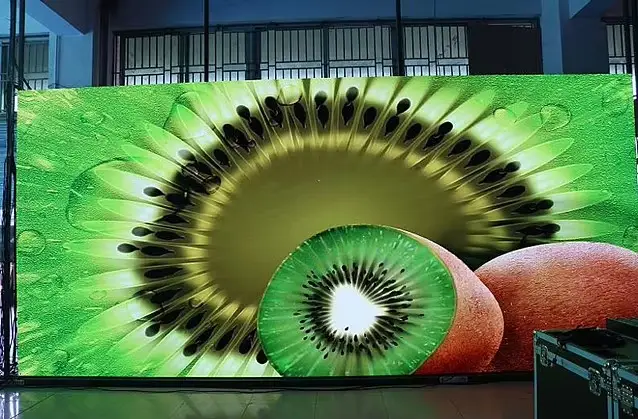
5、 Good interactivity, enhancing audience participation
Modern indoor LED displays often have powerful interactive functions, which can greatly enhance the audience’s sense of participation and experience. Through touch technology, sensing technology, etc., viewers can interact in real-time with the display screen to obtain more information and entertainment experiences.
In commercial promotional activities, interactive indoor LED displays play a huge role. Merchants can set up interactive games such as lucky draws, puzzles, Q&A, etc. to attract customers to stop and participate. When customers complete the game through touch or other interactive methods, they can receive corresponding coupons, small gifts, and other rewards, which not only increases the customer’s stay in the store, but also effectively increases their purchase intention and promotes product sales.
Moreover, utilizing social media interaction is also a major highlight of the interactivity of indoor LED displays. Viewers can scan the QR code on the screen to display their photos, messages, and other content in real time, achieving sharing and communication with others. This feature is extremely popular in entertainment events such as concerts and music festivals, where audiences can express their love and feelings for the performance and create a more lively live atmosphere. At the same time, businesses and event organizers can also collect data generated by the audience during the interaction process to understand their preferences and needs, providing strong basis for subsequent marketing and event planning.
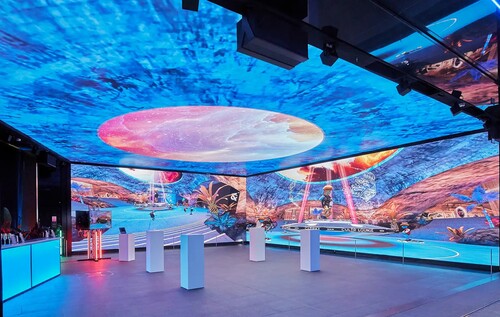
6、 Flexible installation, adaptable to diverse space requirements
The installation of indoor LED display screens has extremely high flexibility and can adapt to various spatial and environmental requirements. It can be customized and installed according to the size, shape, and usage requirements of the site.
For small display spaces such as boutique stores, galleries, etc., smaller and thinner LED displays can be chosen, using wall mounted or embedded installation methods, which not only do not occupy too much space, but also have a good display effect. In large commercial plazas, convention centers, and other places, large splicing LED display screens can be installed. Through seamless splicing of multiple display screens, a huge display image can be formed, creating a stunning visual effect.
In addition, LED displays can also be creatively installed, such as suspended, floor standing, curved installation, etc., to meet different design concepts and spatial layouts. In some art exhibitions, fashion shows, and other events, LED displays can become the visual focal point of the entire space through unique installation methods, perfectly integrating with the surrounding environment and bringing a unique visual experience to the audience.
7、 Convenient maintenance and reduced usage costs
The maintenance of indoor LED display screens is relatively convenient, which greatly reduces their usage costs. On the one hand, the modular design of LED displays makes it very easy to replace individual modules. When a module malfunctions, technicians only need to remove the damaged module from the display screen and install a brand new module, without the need for large-scale maintenance or replacement of the entire display screen, greatly reducing maintenance time and minimizing the impact on normal use.
On the other hand, LED displays have lower energy consumption. Compared with traditional display devices, LED technology has higher luminous efficiency and can provide sufficient brightness while consuming less electricity. This not only helps to reduce long-term operating costs, but also aligns with the current trend of energy conservation and environmental protection.
Furthermore, LED display screens have a longer lifespan. Generally speaking, high-quality indoor LED displays can be used normally for 5-10 years or even longer. During this period, regular cleaning and simple maintenance work, such as checking for loose wiring connections and cleaning the dust on the surface of the display screen, can ensure its stable operation.
At the same time, many LED display manufacturers also provide comprehensive after-sales services, including regular inspections, technical support, etc. Users can promptly contact the manufacturer for professional solutions if they encounter any problems during use, further reducing concerns and potential costs during use.

conclusion
In summary, indoor LED displays have been widely used in various fields such as commerce, entertainment, education, transportation, etc. due to their high definition, realistic colors, strong interactivity, flexible installation, and convenient maintenance. And with the continuous advancement and innovation of technology, its performance will continue to improve, and its application scope will further expand. In the future, it will play a more important role in our lives and work, bringing people more diverse visual experiences and more efficient and convenient ways of information dissemination.